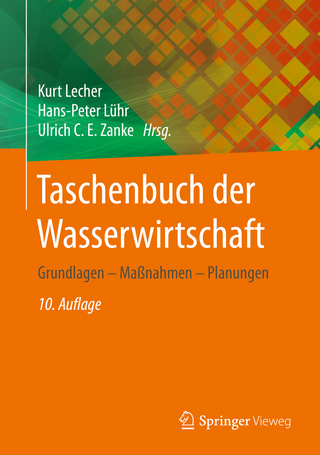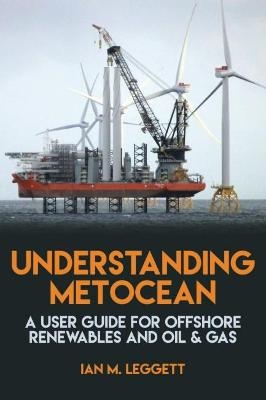
Fundamentals of Solar Radiation
CRC Press (Verlag)
978-0-367-72592-1 (ISBN)
The sun radiates a tremendous amount of energy, called solar energy or solar radiation, which is the main natural source of energy on the Earth, by far. Because solar radiation is the almost unique supplier of energy to the Earth, it has a primary influence on life and activities on the Earth. The climate is a first example, but there are many others, such as plant growth or human health, or even the design of buildings, the production of energy, notably electrical and thermal, or even aging materials. This book aims to provide simple answers to anyone who has questions about solar radiation. Its ambition is to help by presenting the fundamental elements of the solar radiation received on the ground. The book includes many examples and numerous illustrations, as well as some simple but fairly precise equations to calculate the various elements covered and to reproduce the figures and graphs.
The first of the three parts of this book is devoted to the relative geometry between the direction of the sun and an observer on the ground as well as to the solar radiation emitted by the sun and received at the top of the atmosphere. The orbit of the Earth around the sun and the solar declination are described. The concept of time is introduced which is closely linked to the solar cycle and the rotation of the Earth on itself. Equations are given to calculate the solar radiation received on a horizontal or inclined surface located at the top of the atmosphere. The spectral distribution of the extraterrestrial solar radiation is described. The second part of this book addresses how the solar radiation incident at the top of the atmosphere is attenuated and modified in its downward path to the ground. The reflection of the radiation by the ground is presented. The solar radiation received on the ground by a horizontal or inclined collector plane, such as a natural slope or a rooftop, is discussed, as well as its spectral distribution. The variability of the radiation is addressed in relation to the properties of solar radiation estimated from the measurements. The third part deals with direct or indirect measurements of the solar radiation received on the ground over a given integration time (minute, hour, day, or month), whether for total radiation or radiation in a spectral range such as ultraviolet (UV), or daylight, or photosynthetically active radiation (PAR). It also explains how to check the plausibility of the measurements.
Fundamentals of Solar Radiation will be a valuable resource to all professionals, engineers, researchers, students, and other practitioners that seek an understanding of solar radiation.
Lucien Wald received the M.S. degree in theoretical physics in Marseille and Paris, France, in 1977, the Ph.D. degree from the University UPMC, Paris, in 1980, and the Doctorat d’Etat ès Sciences on the applications of remote sensing to oceanography from the University in Toulon, France, in 1985. Since 1991, he has been a Professor at the MINES ParisTech. He created a research team and was its head till 2007. He was responsible of PhD studies in energy from 2005 to 2012. He retired in 2018. Lucien Wald contributed to the birth and progress of Earth observation. He has been very active within the European association of remote sensing laboratories (EARSeL) from 1980 to 2009, and then within the European Meteorological Society (EMS). His activities in data science were rewarded in 1996 with the famous French Blondel Medal. He was the recipient of the Autometrics Award in 1998 and the Erdas Award in 2001 from the American Society for Photogrammetry and Remote Sensing for articles on data fusion. His other research activities focused mainly on geosciences: oceanography, meteorology and solar radiation. His scientific publications cover Earth observation, marine, terrestrial and urban environments, air pollution, meteorology, solar radiation and its effects on human health. Lucien Wald on Publons. https://publons.com/researcher/2863398/lucien-wald/metrics/ Lucien Wald on Google citations. https://scholar.google.fr/citations?user=hRxJ0zAAAAAJ&hl=fr
The Definition of Time and Different Time Systems, The Course of the Sun over an Observer on the Ground, Solar Radiation Incident at the Top of the Atmosphere, Radiative Transfer in the Atmosphere, Ground Reflection, Solar Radiation Received at Ground Level, Spectral Distribution of the Solar Radiation at Ground, Variability – Implications for Estimating Radiation, Ground-Based Instruments for Measuring Solar Radiation at Ground, Other Means for Estimating Solar Radiation at Surface, Control of the Plausibility of Measurements, Visual and Automated Procedures.
| Erscheinungsdatum | 17.07.2023 |
|---|---|
| Zusatzinfo | 17 Tables, black and white; 76 Line drawings, black and white; 27 Halftones, black and white; 103 Illustrations, black and white |
| Verlagsort | London |
| Sprache | englisch |
| Maße | 174 x 246 mm |
| Gewicht | 500 g |
| Themenwelt | Naturwissenschaften ► Geowissenschaften ► Meteorologie / Klimatologie |
| Technik ► Elektrotechnik / Energietechnik | |
| ISBN-10 | 0-367-72592-4 / 0367725924 |
| ISBN-13 | 978-0-367-72592-1 / 9780367725921 |
| Zustand | Neuware |
| Haben Sie eine Frage zum Produkt? |
aus dem Bereich


